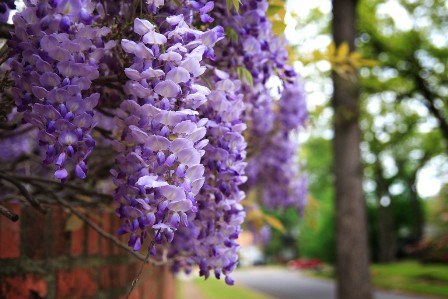What Are the Best Tips to Grow Wisteria?
Wisteria is a climbing, deciduous vine that produces long drooping clusters, fragrant flowers. When growing wisteria, it is important to get new plants well established at planting time, but once in the soil, glycine is easy to grow and very little maintenance. Regular pruning is the primary care task, and it improves flowering and helps maintain a tidy shape. Two of the best tips to encourage abundant flowering is to limit watering and abstain from manure. When it comes to glycines, too much care can do more harm than good.
By growing wisteria, taking the time to select the planting site and prepare the planting hole will contribute to the long-term health and success of the shrub. Wisteria flowers better in full sun, at least six hours a day - but the more the better. A place that receives good drainage and has a texture of loamy soil rich in humus is ideal. Wisteria prospers in a slightly acid soil with a pH level between 6.0 and 7.0. This climbing vine also requires a trellis structure to support its growth.
Once the planting site is determined, a hole of 18 to 24 inches (about 45 to 60 cm) wide and with the same depth as the nursery pot should be prepared. The soil of the hole can be mixed with peat moss or manure to create a two-thirds mixture of garden soil and one-third organic soil matter. The additional material improves the texture of the soil. In an alkaline soil, the peat moss may slightly increase the acidity of the soil.
One of the main reasons for glycine is growing fragrant flowers, and when a glycine produces abundant foliage but only a few clusters of flowers, it can be disturbing and frustrating. By growing glycine, excess watering and more fertilization are the two main reasons for limited flower production. Fertilizers, especially nitrogen-rich formulas, and excess water promote the growth of abundant green greenery and stem production, but limited flowers. In very poor soils, glycine may require a slight application of fertilizer. Watering should be limited to a very hot and dry weather when the leaves begin to wilt.
Regular pruning is important when maintaining glycines growing. Pruning encourages the production of flowers. This task should be done at the end of the winter before the plant comes out of dormancy. During the first years, while the vine is implanted, the branches must be cut by half their length and encouraged to grow in the trellis or structure. Ongoing maintenance size for established glycines should be performed in winter.
- Too much fertilizer can limit the production of glycine flowers.
What Are the Best Tips to Grow Wisteria?
 Reviewed by Raja
on
May 24, 2017
Rating:
Reviewed by Raja
on
May 24, 2017
Rating:
 Reviewed by Raja
on
May 24, 2017
Rating:
Reviewed by Raja
on
May 24, 2017
Rating:












No comments: